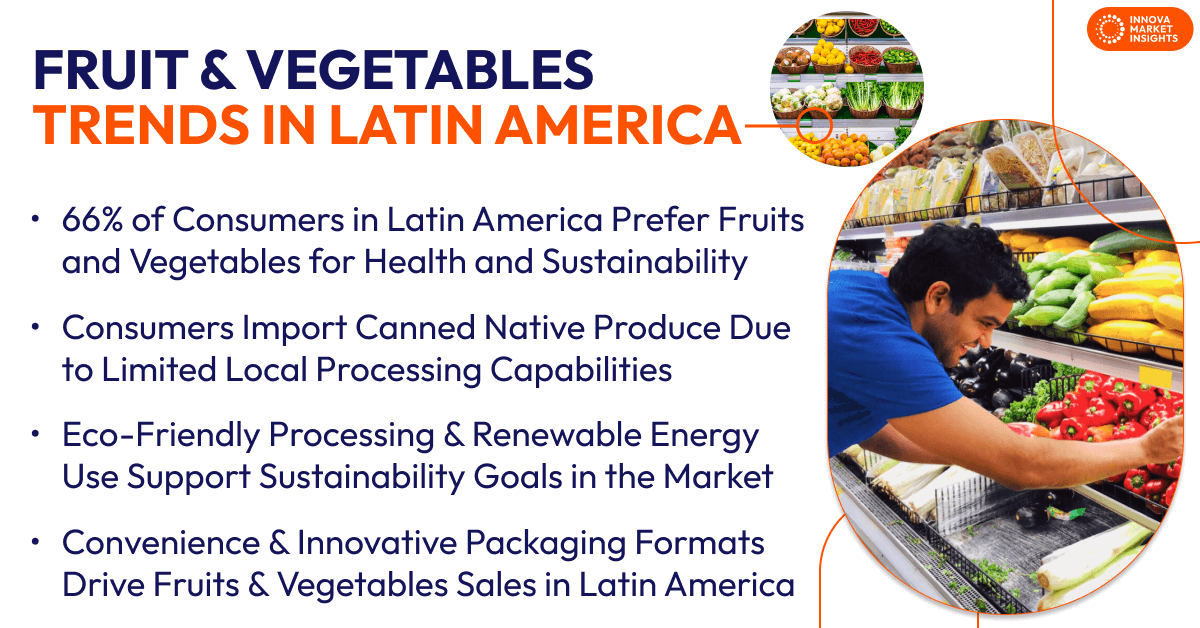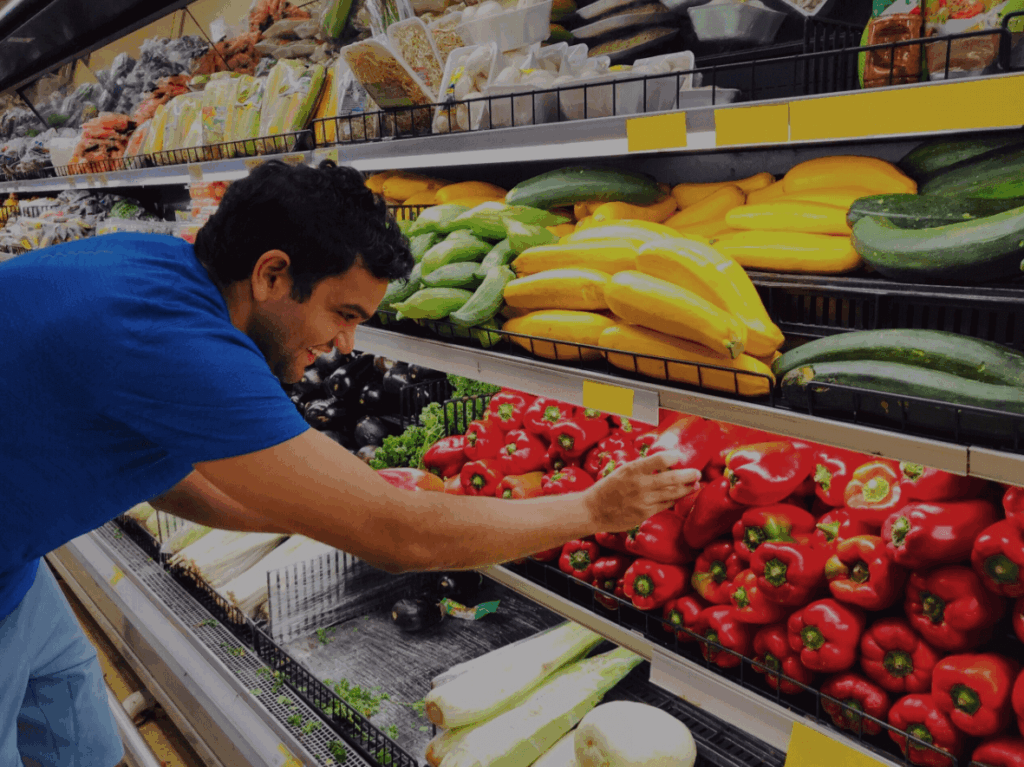May 20, 2025 – Fruits and vegetables are essential to a healthy lifestyle, providing vital nutrients that support overall well-being. In Latin America, the fresh produce sector continues to evolve, driven by consumer preferences, sustainability efforts, and innovative farming techniques.
Innova’s 360 research into these fresh, functional, and locally sourced options, highlighting product categories, formats, and choices influencing the industry. It also provides opportunities for brands and producers to explore to meet the changing market expectations.
Fruits and Vegetables Category
The vegetables subcategory leads the category launches in Latin America over the past three years. Among the top 5 countries in fruit and vegetables launches, Mexico has shown continued growth over the past five years. Walmart is the top company in this category, followed by Cencosud, Carrefour, Grupo Fartura De Hortifrut, and Olimpica.
No additives/preservatives, natural, gluten-free, organic, indulgent, and premium are top claims in this category. Vegetable trends show a continued rise in herb flavors, while others like ginger, carrot, mint, and bacon are declining or disappearing from recent launches.
Plant-Diets Trends
Latin America is shifting toward plant-forward diets, with the EAT-Lancet diet supporting this movement. 66% of consumers prefer eating fruits and vegetables, aiming to balance human health and environmental sustainability. More than half of consumers in LATAM prefer locally grown produce for health reasons, better availability, and environmental concerns over the past year. However, they import canned versions of native produce, such as sweet corn and tropical fruits, possibly due to limited local processing capabilities.
Fruits and Vegetable Formats Trends
Brands are expanding their fruits and vegetables shelving formats. Frozen peas in a plastic pouch, olives in brine, and whole mushrooms in a PET standard tray are a few examples. Fruit and vegetable trends reveal that convenience remains a significant factor, influencing 69% of consumers’ food and beverage purchasing decisions in LATAM. Notable convenience claims include frozen, ready-to-eat, and pre-cooked frozen mixes. Alongside convenience, innovations in modern packaging formats drive sales, as products in cans, cups, spouted pouches, resealable jars, and vacuum-sealed bags enhance consumer appeal by prioritizing convenience, portion control, and sustainability.

Personalized Nutrition Trends
Consumers actively gain information about personalized nutrition choices. This aligns with Innova’s “Precision Wellness” trend, which highlights a culture of information that challenges brands to deliver tailored nutrition for every phase of life. Brands reflecting this trend are helping consumers to make informed choices with nutrition warning labels, such as high in sugar, sodium, or saturated fat. In LATAM, consumers’ main physical health concerns are weight management, heart health, and healthy aging. Brands provide products with low-calorie, high-water content, vitamins, essential acids, and fiber to maintain their health.
Digestive/gut health is the leading health aspect driving functional food and beverage purchases, reflecting the rise of gut health claims in fruit and vegetables in LATAM over the past three years. Innova’s “Gut Health: Flourish from Within” trend aligns with this, highlighting growing awareness of the microbiome, creating space for ingredients like fiber.
Superior Choices and Sustainability Trends
35% of consumers in LATAM notice premium quality products/ingredients more frequently during food and beverage purchases. Brands are leveraging this win over consumers with superior choices, such as premium strawberries in polystyrene standard trays and chickpeas in premium quality and flavor packed in easy-to-open aluminum cans. These preference to superior choices aligns with the “Ingredients and Beyond” food trend and reflects ongoing fruit and vegetable trends focused on ingredient quality and product differentiation.
Consumers increasingly include sustainable eating in their diets. They are preferring products produced using renewable energy or processes that promote sustainability and ecological balance. Brands are adopting eco-labeling standards to enhance their appeal and incorporate compostable packaging innovations to meet growing demand.
What’s Next in Fruit and Vegetable Trends?
Consumer preferences, innovative farming methods, and sustainability efforts influences Latin America’s fruits and vegetable sector. As demand grows for health-conscious and environmentally friendly products, brands can explore new strategies to remain competitive and appeal to modern consumers.
Fruit and vegetable trends show that consumers increasingly seek products with clear health benefits. Brands can highlight nutritional advantages such as vitamins, antioxidants, and fiber directly on packaging to enhance trust and appeal to health-conscious consumers. Fresh produce can play a larger role in the functional food market. Adding claims related to skin health, gut health, or energy-boosting properties can attract consumers seeking natural health solutions.
Authenticity is vital, highlighting globally inspired food and regional flavors can strengthen brand identity and meet the rising demand for culturally rich, locally sourced produce. Leveraging technologies like high-temperature sanitization and individual quick freezing can enhance product quality maintaining freshness and nutrition. Hydroponics, vertical farming, and regenerative agriculture can enhance yield, minimize environmental impact, and offer consumers fresher and sustainably sourced options, supporting long-term growth.
Latin America’s fresh produce market holds strong potential for innovation. Brands embracing health trends, sustainable farming, and cultural authenticity are likely to connect with evolving consumer expectations.
This article is based on Innova’s Overview in Fruit & Vegetables in Latin America report. This report is available to purchase or with an Innova Reports subscription. Reach out to find out more
